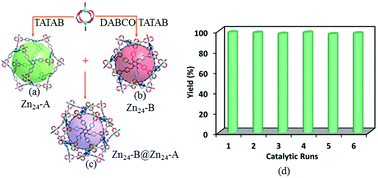Metal organic framework based catalysts for CO2 conversion†
Abstract
Metal organic frameworks (MOFs) are hybrid crystalline materials, exhibiting high specific surface areas, controllable pore sizes and surface chemistry. These properties have made MOFs attractive for a wide range of applications including gas separation, gas storage, sensing, drug delivery and catalysis. This review focuses on recent progress in the application of MOF materials as catalysts for CO2 conversion through chemical fixation, photocatalysis and electrocatalysis. In particular, this review discusses the co-relationship between the physicochemical properties of MOF materials including their catalytic performance as well as their stability and recyclability under different reaction conditions, relevant to CO2 conversion. Current modification techniques for improving MOF performance are highlighted along with the recent understanding of their electronic properties. The limitations of MOF based catalysts are also discussed and potential routes for improvement are suggested.

- This article is part of the themed collection: Materials Horizons 10th anniversary regional spotlight collection: Asia-Pacific


 Please wait while we load your content...
Please wait while we load your content...